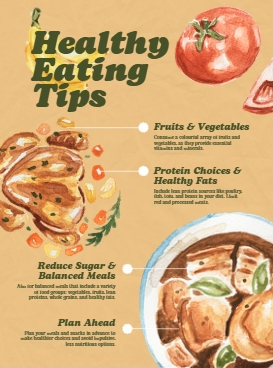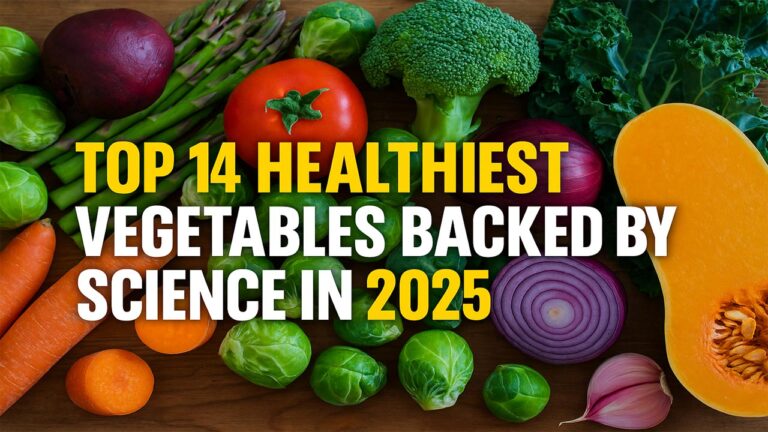Vegetables aren’t just side dishes — they are powerful nutrition boosters that can supercharge your body, improve your mood, and even fight off disease. Whether you’re trying to support your immune system, enhance brain function, or simply feel more energized, the right vegetables can make a world of difference to your body.
Healthy options are a great choice for your life.
From boosting heart health to protecting your eyes, balancing hormones to supporting your gut, every vegetable on this list offers something truly extraordinary. Boosting is a great option.
1. Asparagus
Asparagus is one of a number of vegetables that act as a prebiotic, feeding the beneficial bacteria which live in our digestive systems, and in so doing, helping them thrive and increase in number.
As a green vegetable, it’s exceptionally high in folate and makes a useful contribution towards our iron intake. The characteristic taste and smell of asparagus is thanks to asparagusic acid, sulphur-containing compounds, that help support the liver and fight inflammation.
2. Beetroot
Naturally rich in nitrates, beetroot is heart-friendly because the nitrates help improve blood flow by relaxing blood vessels, reducing arterial stiffness and promoting dilation – all of which lowers blood pressure. Nitrates may also support exercise endurance and potentially improve sports performance.
Whether you’re sedentary with poor circulation or a keen athlete, including beetroot in your regular diet may improve how your body uses oxygen.
3. Broad beans
One of the earliest cultivated foods, broad beans are packed with nutrients and minerals such as iron, manganese and potassium, as well as the B group of vitamins that support nerve and brain function. They’re also rich in fibre, including resistant starch, which while resistant to our digestion is used as a food source by the beneficial bacteria that live in our gut.
Broad beans also contain L-dopa, a compound and precursor to the brain chemical dopamine. L-dopa is used by medical professionals in the treatment of Parkinson’s, and there have been some suggestions that consuming broad beans may be helpful for those with mild symptoms of this condition.
4. Broccoli
Brassicas, such as broccoli and cabbage, contain a plant compound called indole-3-carbinol (I3C). It acts as a plant oestrogen and may help balance hormones by regulating oestrogen levels.
has shown promise in lessening the risk of oestrogen-induced breast and reproductive cancers in both men and women, although more studies are needed in this area.
Use up the broccoli in your fridge to make our quinoa, squash and broccoli salad, herby broccoli and pea soup or smoky cod, broccoli and orzo bake.
5. Brussels sprouts
As well as supplying more essential nutrients per calorie than most other veggies, brussels sprouts are especially rich in the plant compound, kaempferol. This antioxidant has been studied for its many health-promoting properties, including its benefits for heart health.
If possible, microwave or steam, rather than boil sprouts to retain as much as twice its nutritional goodness.
Enjoy sprouts in our flavoursome recipes, including brussels sprouts slaw, chilli-charred brussels sprouts and brussels sprouts grain bowl.
6. Butternut squash
Research has shown that phytonutrients, including zeaxanthin and lutein, may help protect eye health – butternut squash contains both of these carotenoids.
Beta-carotene, which is also found in squash, is converted to vitamin A in the gut and plays an important role in immune health. It may be especially beneficial for the elderly.
Storing squash improves its flavour and increases the levels of carotenoids, making squash the perfect vegetable for the winter months.
7. Carrots
Famed for improving night vision, carrots are a source of lutein and zeaxanthin, which protect the retina from UV light and may reduce the risk of cataracts. Carrots are loaded with beta-carotene, which our body converts to vitamin A for a robust immune system, healthy vision and skin.
Interestingly, when we cook carrots by roasting, baking, griddling or microwaving we can improve, or at the very least maintain, their carotenoid content.
Put the carrots in your fridge to good use, try our roasted carrot, rocket and lentil salad, spiced carrot and lentil soup and Middle Eastern carrot salad.
8. Cauliflower
Cauliflower is a good source of choline, an essential nutrient we need for mood, memory and recall. Little talked about as a nutrient, choline is a key building block of acetylcholine, a chemical messenger involved in signalling the central nervous system.
Like broccoli and cabbage, cauliflower also provides detoxifying sulforaphane which has a number of health benefits, including reducing the risk of cancer. It’s best to chop or slice the vegetable to activate this beneficial chemical and lightly cook or eat it raw to maximise the effects.
9. Celery
Although celery has a high-water and fibre content, it contains numerous vitamins, minerals and plant compounds including flavonoids. These support heart health, liver function and may help manage blood sugar.
Try our simple celery recipes, including celery soup and creamy celery gratin.
10. Chard
With fewer calories and more magnesium than kale, chard (also known as Swiss chard) is an unsung hero. It also contributes iron and vitamin C. Don’t discard the stems because they’re a good source of heart-healthy, potassium.
Animal studies suggest that chard may be effective at reversing the effects of diabetes, although more studies are needed to assess the relevance for humans.
Use chard in our recipes for celeriac ribbons tossed with chard, garlic and pumpkin seeds, and quick braised chard with lentils.
11. Garlic
Much of garlic’s therapeutic benefits are due to allicin, an active, sulphur-containing compound that gives garlic its pungent smell and distinctive taste.
While the act of chopping or crushing may stimulate the production of allicin, heat may inhibit some of the perceived properties, making it best to add garlic late in the cooking process.
Numerous studies have focused on garlic’s potential in reducing the risk of heart disease and helping to manage cholesterol levels. Garlic may also lower blood pressure through its ability to widen blood vessels, allowing blood to flow more freely.
Enjoy garlic in our recipes for spicy spaghetti with garlic and mushrooms and garlic and mash potato bake.
12. Kale
A popular ‘superfood’, kale contains twice the vitamin C of spinach (although spinach has twice the vitamin E). Its plant compounds include beta-carotene. All together, these are important for supporting a healthy immune system.
Kale is also a good source of plant-based calcium, needed for strong bones and teeth, and its low levels of oxalate make the calcium more available for absorption. Its significant amounts of vitamin K work alongside vitamin D to support bone health.
13. Mushrooms
Mushrooms are one of the few non-animal sources of vitamin D. Indeed, when exposed to ultraviolet (UV) radiation, either from sunlight or a UV lamp, mushrooms actually increase their concentration of vitamin D.
For this reason you can leave mushrooms on the counter in direct sunlight for 15-120 minutes; studies suggest this simple act may result in levels of vitamin D2 as high as 10mcg per 100g fresh weight.
Mushrooms also contain active polysaccharides, one of which is beta-glucan, a type of soluble fibre. This compound activates parts of our immune system, including immune cells called natural killer cells and white blood cell macrophages – both increase our body’s ability to fight infection and possibly even stop the growth or progression of tumours.
Add more mushroom recipes to your repertoire with our healthy mushroom brunch, creamy spinach and mushrooms penne and mushroom jacket potatoes.
14. Onion
Onions are loaded with plant chemicals, including flavonoids, which have both an antioxidant and anti-inflammatory effect. When consumed regularly and in sufficient quantity, these compounds may help protect against chronic conditions, such as cancer and diabetes.
In fact, onions are one of the richest sources of flavonoids in our diets, containing over 25 different kinds. One of them, quercetin, has anti-viral and anti-histamine properties. Try to avoid over-peeling since quercetin is found in the outer layers of the onion.
Keeping yourself healthy is a great way to have a good long life. Avoid junk food and anything that’s not good for you.

Frequently Asked Questions (FAQ)
What are the healthiest vegetables to eat in 2025?
The healthiest vegetables in 2025 include broccoli, kale, garlic, carrots, mushrooms, onions, beetroot, asparagus, and more. These vegetables are rich in vitamins, minerals, antioxidants, and plant compounds that support overall health.
Why are vegetables important for overall health?
Vegetables provide essential nutrients like fiber, vitamins A, C, K, potassium, folate, and antioxidants. They help improve digestion, boost immunity, protect heart health, balance hormones, and may reduce the risk of chronic diseases.
Which vegetables support brain and memory function?
Vegetables like broccoli, cauliflower, celery, and leafy greens (like kale and chard) are known for their brain-boosting nutrients such as choline, antioxidants, and B vitamins.
Can eating vegetables help with weight loss?
Yes. Many vegetables are low in calories and high in fiber, which promotes satiety and reduces overall calorie intake. Vegetables like mushrooms, kale, and celery are great choices for a weight-loss-friendly diet.
Are cooked vegetables less nutritious than raw?
Not always. While some nutrients like vitamin C may decrease with cooking, others like beta-carotene in carrots or lycopene in tomatoes become more bioavailable. Light cooking methods such as steaming or roasting can preserve most nutrients.
How can I include more vegetables in my diet daily?
Add vegetables to soups, salads, smoothies, omelets, or stir-fries. You can also prepare vegetable-based snacks or swap refined carbs with options like cauliflower rice or zucchini noodles.
What vegetables are best for heart health?
Beetroot, brussels sprouts, garlic, and leafy greens are excellent for supporting heart health due to their anti-inflammatory and blood pressure-lowering properties.
Which vegetables are highest in antioxidants?
Kale, onions, garlic, mushrooms, and brussels sprouts are rich in antioxidants that help fight free radicals and protect against cell damage.
Is it better to eat organic vegetables?
Organic vegetables may have fewer pesticide residues, but both organic and non-organic vegetables offer similar nutritional value. Washing thoroughly helps reduce potential contaminants.
Can I still benefit from frozen vegetables?
Absolutely. Frozen vegetables are often picked and frozen at peak ripeness, preserving most nutrients. They are a convenient and healthy alternative when fresh produce is not available.

Your comment will appear immediately after submission.